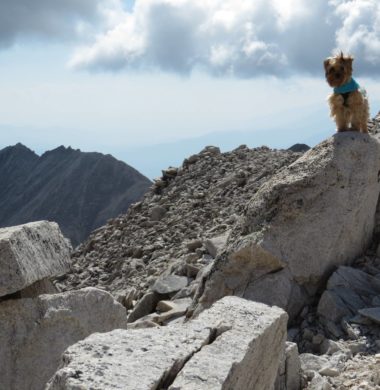14er Training: Getting in Shape

Summer is upon us in the Rocky Mountains, which means those stunningly high peaks are starting to call our names once again. Home to an impressive number of 14,000-foot summits, Colorado is great for the adventure-minded and those who want to push themselves physically. As wonderful an experience as making it to the top of can be, it requires good 14er training with serious fitness prep to make sure you don’t suffer an injury or fall victim to altitude sickness.
Why You Need to Prepare
As commonplace as a 14er hike is for Coloradans these days, proper preparation must be a top priority for both novice and advanced hikers. There are plenty of risks when hiking at altitude, from altitude sickness to thinner air requiring a higher level of cardiovascular strength. Add in the rocky trails and wildlife you might encounter and the importance of mitigating as many of the risks as possible is clear. When you prepare properly, you pave the way for a successful hike and a wonderful memory.
Staring your 14er Training: How to Get Ready
Increase Your Cardio
Knowing why you need to prepare is a great foundation, but the why alone won’t cut it – you also need to know how.
To begin your 14er training, start by incorporating more cardio into your routine. If you are new to running, start doing 30 minutes twice a week and work your way up to 45 minutes. Remember that walking is completely ok as you begin your cardio fitness journey.
As you progress, continue increasing your distance in walking/running and start to incorporate interval training.
Eventually, carry a pack with about 10-15 pounds on all your cardio exercises to simulate the added weight of your day pack when the time to hike arrives.
Start Hiking More
If you don’t already, take some time on the weekend to go on shorter hikes at slightly higher elevations and work your way up to even higher elevations and longer hikes as you feel comfortable.
Before you tackle that 14er, try mastering a 6-8 hour hike at a slightly lower elevation (11,000 – 13,000 ft.) first. This will give you a pretty good idea of what you’re in for and whether or not you’re truly ready for the rigors of the 14er.
Include Strength Training
Don’t be fooled – as much demand as a 14er puts on your cardiovascular system, it’s also important to incorporate strength training into your preparation plan. As reported by the Coloradan, using functional exercises in your 14er training to simulate the conditions you’ll be facing on your hike is one of the best ways to make sure your other muscles (not just your heart!) are ready for the heights, too.
Lunges using unstable surfaces, lower back extensions, leg-to-leg jumps and circuit training will help your body prepare for the varying conditions of a high-altitude Rocky Mountain trail.
If you approach your 14er training with heart health and holistic body conditioning in mind, you’ll be ready to tackle those trails and take in the awe-inspiring summit sights without gasping for air or giving up before reaching the top.
How to Use This Information
As with any physical activity, it is important to consult your physician before entering into a rigorous training program. Knowing how to best prepare for your hike is an important step in having the best experience possible and taking your heart health to the next level. If you’re not sure where to start, Take a look at our class calendar or call us at 303-744-1065.
Happy hiking! What peaks are on your Rocky Mountain bucket list and how are you training for them?
- Arrhythmia vs. Dysrhythmia - July 2, 2024
- Services Offered at Our Transitional Heart Failure Clinic - June 25, 2024
- South Denver Cardiology Offers Pulse Field Ablation to Treat Atrial Fibrillation - June 7, 2024
Sign Up
As with any health concerns, your specific treatment program should be discussed thoroughly with your primary care physician as well as any specialists who may need to be consulted – like a cardiologist.
Sign Up
